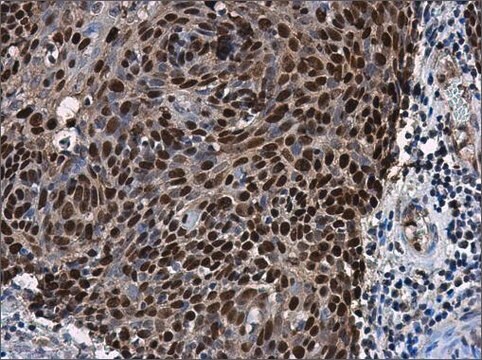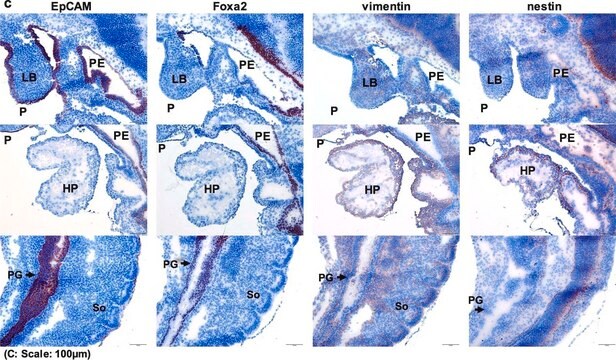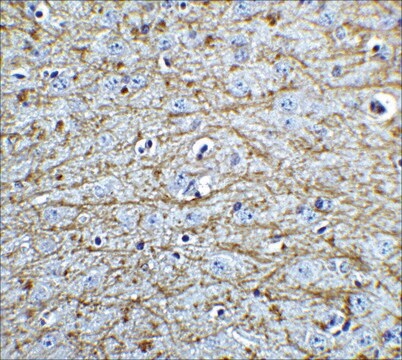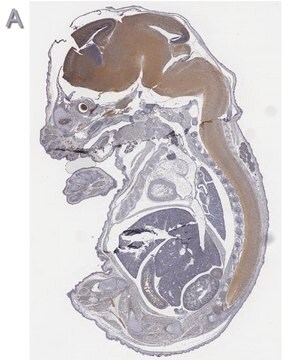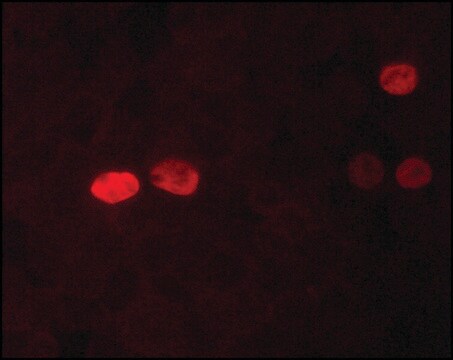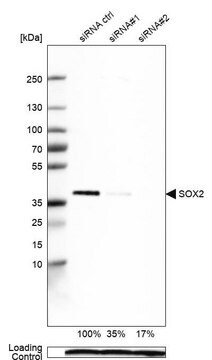MAB4343
Anti-SOX2 Antibody
CHEMICON®, mouse monoclonal, 6F1.2
Synonym(s):
Anti-ANOP3, Anti-MCOPS3
About This Item
Recommended Products
Product Name
Anti-SOX-2 Antibody, clone 6F1.2, Chemicon®, from mouse
biological source
mouse
Quality Level
antibody form
purified immunoglobulin
antibody product type
primary antibodies
clone
6F1.2, monoclonal
species reactivity
mouse, human
packaging
antibody small pack of 25 μg
manufacturer/tradename
Chemicon®
technique(s)
immunocytochemistry: suitable
immunohistochemistry: suitable
western blot: suitable
input
sample type: mouse embryonic stem cell(s)
sample type neural stem cell(s)
sample type: human embryonic stem cell(s)
sample type induced pluripotent stem cell(s)
isotype
IgG2b
NCBI accession no.
UniProt accession no.
shipped in
ambient
storage temp.
2-8°C
target post-translational modification
unmodified
Gene Information
human ... SOX2(6657)
mouse ... Sox2(20674)
Related Categories
General description
Immunogen
Application
Epigenetics & Nuclear Function
Transcription Factors
Quality
Target description
Physical form
Storage and Stability
Other Notes
Legal Information
Disclaimer
Not finding the right product?
Try our Product Selector Tool.
recommended
Certificates of Analysis (COA)
Search for Certificates of Analysis (COA) by entering the products Lot/Batch Number. Lot and Batch Numbers can be found on a product’s label following the words ‘Lot’ or ‘Batch’.
Already Own This Product?
Find documentation for the products that you have recently purchased in the Document Library.
Articles
Skip weekend feedings. Defined serum-free and feeder-free expansion media for human pluripotent stem cells (ES and iPS cells). See publications and protocols.
The Simplicon™ RNA Reprogramming Technology is a next generation reprogramming system that uses a single synthetic, polycistronic self-replicating RNA strand engineered to mimic cellular RNA to generate human iPS cells.
Our team of scientists has experience in all areas of research including Life Science, Material Science, Chemical Synthesis, Chromatography, Analytical and many others.
Contact Technical Service